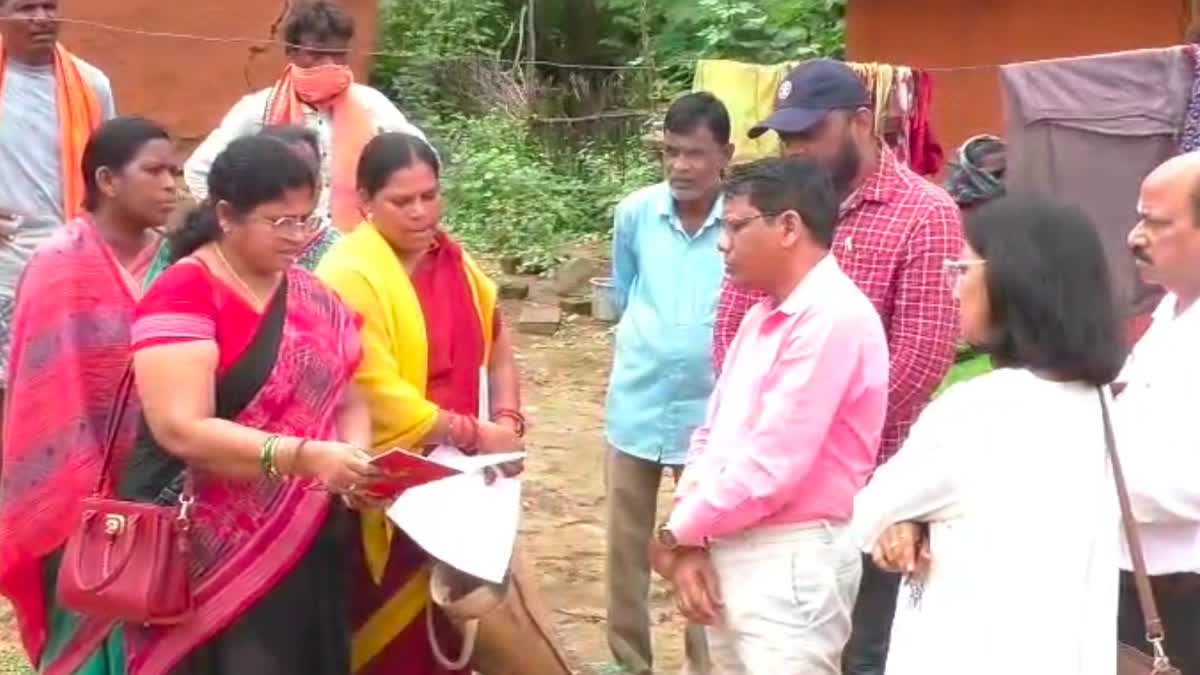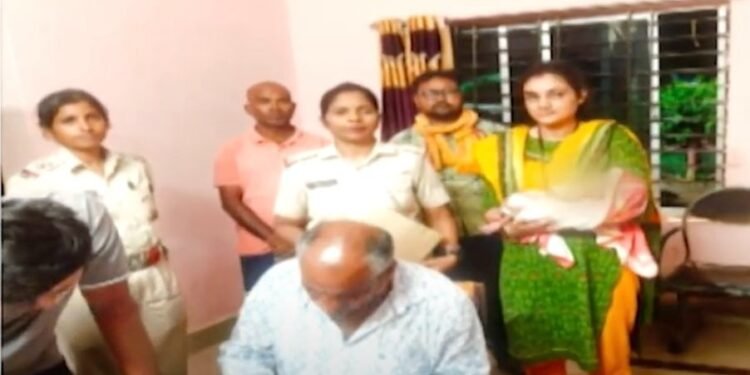by Aswini Kumar Darjee
Input: Rajib Sagaria
Balangir (Odisha)- In Balangir District a heart-wrenching narrative continues to repeat itself across political regimes and changing leadership. The poorest of the poor in this backward region are still being pushed to sell their own children, not by choice, but by sheer helplessness. In the past seven months alone, five incidents of child sale have been reported in Balangir district, a region that has now sadly etched its name on the map of hunger and extreme poverty in India.
The latest incident comes from Bagder village in Titilagarh block, where a couple sold their infant daughter for twenty thousand rupees. The child has since been rescued safely, but the story behind it speaks volumes about the failure of government schemes. Nila Rana and his wife Kanak Rana, the parents, admitted that their decision was driven by their inability to provide food and care to their newborn. Kanak had given birth to a baby girl on June 20, but the couple, struggling to even feed themselves two square meals a day, saw no way out.
Nila, like many others in this region, migrates to other states for seasonal labor. Their family was once included under the National Food Security Scheme and received free rice through their ration card. But due to incomplete e-KYC formalities, their ration card was canceled and they were suddenly excluded from the system. They live in a broken mud house, with no benefit from central or state housing schemes. Only after the news of the child’s sale emerged did officials rush to provide 25 kilograms of rice and promise a pucca house under government programs.
What is disturbing is that all of these cases come from so-called dadan-prone blocks—areas with a high number of labor migrations due to lack of employment. Earlier, in Khaprakhol block, a child was reportedly sold for five thousand rupees. In Karlagaon panchayat under Muribahal block, a woman sold her infant daughter to a man from neighboring Chhattisgarh. These are not isolated incidents but recurring tragedies tied to one root cause—poverty and the breakdown of support systems.

The past bears witness to similar horrors. In June 1985, a woman from Amalapali village in Khariar block of Nuapada district (then part of Kalahandi) sold her sister-in-law Banita for forty rupees to a man from Khyatiguda village in Bangomunda block of Balangir district. At that time, Prime Minister Rajiv Gandhi had visited the region.
In November 1992, Kumari Bhoi, a tribal woman from Bhalumunda in Bangomunda block, sold her daughter Bhumisata for five hundred rupees to Lingaraj Hota of Jamkhunta village. Around the same time, in Kurlubhata village, Nathila Suna from the Scheduled Caste community sold her son Rohit to a social worker from Titilagarh for eight hundred rupees. That incident occurred when P V Narasimha Rao was the Prime Minister.
In February 2001, a girl named Hema Tandi from Bangomunda block was sold by her father for five thousand rupees. In 2011, following the starvation death of Premshila in Belpada gram panchayat of the same block, her children Pari and Jemati were allegedly purchased by a local journalist.
In all of these cases, one pattern emerges clearly—these incidents are not born of criminal intent but of systemic neglect. The blocks where they occur are marked by extreme poverty, lack of employment, and ineffective implementation of schemes like MGNREGA and the Public Distribution System. Crores are being spent annually under these programs, yet people continue to remain unemployed and hungry.
The example of Nila and Kanak shows how even being a beneficiary on paper does not guarantee food or shelter. Their ration card was canceled due to administrative lapses, and they were left with nothing. Government schemes such as PMAY fail to reach those living in crumbling houses. Even MGNREGA, designed to guarantee rural employment, has fallen short in areas like Balangir, where migration for labor continues to be a compulsion rather than a choice.
The most painful part is that help always arrives too late—only after the tragedy strikes and the headlines scream. Twenty-five kilos of rice and a hurried promise of a house do not erase the helplessness that pushed a mother to part with her child. These are not just governance failures; they are wounds on the conscience of a nation that aspires to be a global superpower.
In the light of such deeply moving and alarming incidents, one must ask whether the so-called development for the poor has turned into a hollow slogan. The grand vision of “Sabka Saath, Sabka Vikas” rings empty when the stomachs of the poorest remain empty and their children are reduced to commodities for survival.
The story of Balangir is a question mark on every welfare scheme. It forces us to ask—are we truly progressing if hunger still drives mothers to sell their children? Can any nation call itself developed when its poorest are left so abandoned?
Until these questions are answered with sincerity and action, the smile of a rescued child will always be tinged with the pain of a broken promise.






